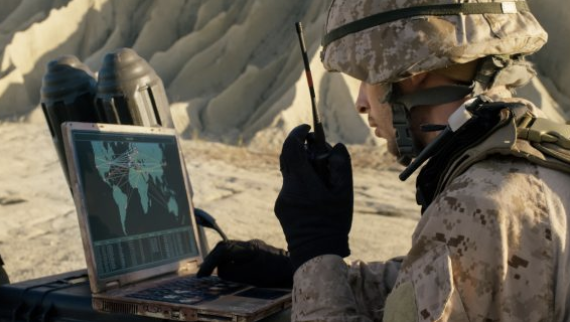Originally posted on http://www.vmware.com by Jeremiah Sanders

Machine-enabled decision-making will win modern conflicts — and the country that best adapts to this new reality will prevail in the field. Our military must therefore break down silos and speed the flow of information within its services because victory goes to those who make the best decisions, fastest.
The U.S. Department of Defense agrees — and their Joint All-Domain Command and Control (JADC2) initiative is designed to bring about faster and better decision-making among U.S. and coalition partners. JADC2 is a top strategic investment priority for the DoD (~$30B+ over five years), and the initiative has the expressed goal to create a “Military Internet of Things.”
JADC2 seeks AI-assisted human judgment to respond to battlefield dynamics in near real-time. Data will be collected by numerous sensors throughout the Armed Forces and processed by AI. With the right information reaching the right people faster, commanders can then make rapid, better-informed decisions. Today, decision-making is often a multi-day process, and this must change: Future conflicts may require commanders to make decisions within hours, minutes — or even seconds.
The Digital Transformation of Warfare
Creating a new data cognition-based framework that enables rapid-fire decisions calls for the digital transformation of warfare.
A successful manifestation of JADC2 requires a continuous real-time connection among thousands of users and military platforms, planes, tanks, ships, vehicles, satellites, and thousands of other nodes. A virtualized and highly automated “Any Cloud” abstraction layer that can securely share information with allies and commanders in the field using any app, anywhere will be fundamental.
To accomplish this goal, silos will have to be broken down and the military will have to adopt secure, modern app development, distributed data mesh implementations, and open architectures.
JADC2’s scale and complexity mandate services build and manage the complexity in a meaningful way. JADC2 demands a continuous delivery of software-enabled mission outcomes through the multiple layers of IT capability at the scale of thousands of nodes across strategic, operational, and tactical edge echelons.
DevSecOps will be central to the initiative, but so will layered abstraction and automation. Abstraction and automation don’t just bring the architectural attributes of modularity and openness, they also enable operational outcomes the infrastructure must support. The tech stack must enable continuous software developer velocity — it must always be in development, and it must have seamless virtual consistency. Every aspect of the stack will need to keep pace with dynamic operations in the field. And throughout: JADC2 must enable zero-trust security.
The fundamental question is then: Who does the engineering to manage and maintain those services?
Don’t Build What You Can Rent
When I was in uniform at Kessel Run, we had a mantra: “Don’t build what you can buy, and don’t buy what you can rent.” The government should “rent” managed services from private industry — it costs less and delivers better capability. From command center to tactical edge, coalition forces require simple, automated, cloud-first software technologies that enable asymmetric advantage.
As a recognized leader in the field, VMware has powered the world’s digital infrastructure for over 20 years. Our solutions form a dynamic, consistent digital foundation that enables app-driven transformation without disruption. Here are just a few ways VMware’s proven technology speeds transformational change by speeding up the cloud journey, helping customers focus on value delivery through apps and data, enabling work from anywhere on any device, and integrating zero trust security solutions.
We Won’t Fight Alone — But We Will Fight Differently
Thankfully, the U.S. has Allies, and we won’t fight alone. VMware technology allows allies to share data and context in real-time, bilaterally. Whether the ally is physically in the field with us or on the other side of the world, they will have the ability to fight alongside us.
But we may need to redefine what constitutes “warfare” itself. Future wars will still feature tanks, planes, and materiel, but many more skirmishes will be fought on the digital front. The U.S. and its allies are fighting those digital battles now: The recent supply chain hack that affected many U.S. government agencies is only one example, and we have to be ready for broader near-peer digital threats.
VMware is up to the challenge of helping fight the wars of today and tomorrow.
Learn more about how VMware can help America and its Allies fight future conflicts, download our INDUSTRY PERSPECTIVE: The JADC2 Mission & VMware – Decision Dominance through Data Dynamism.








